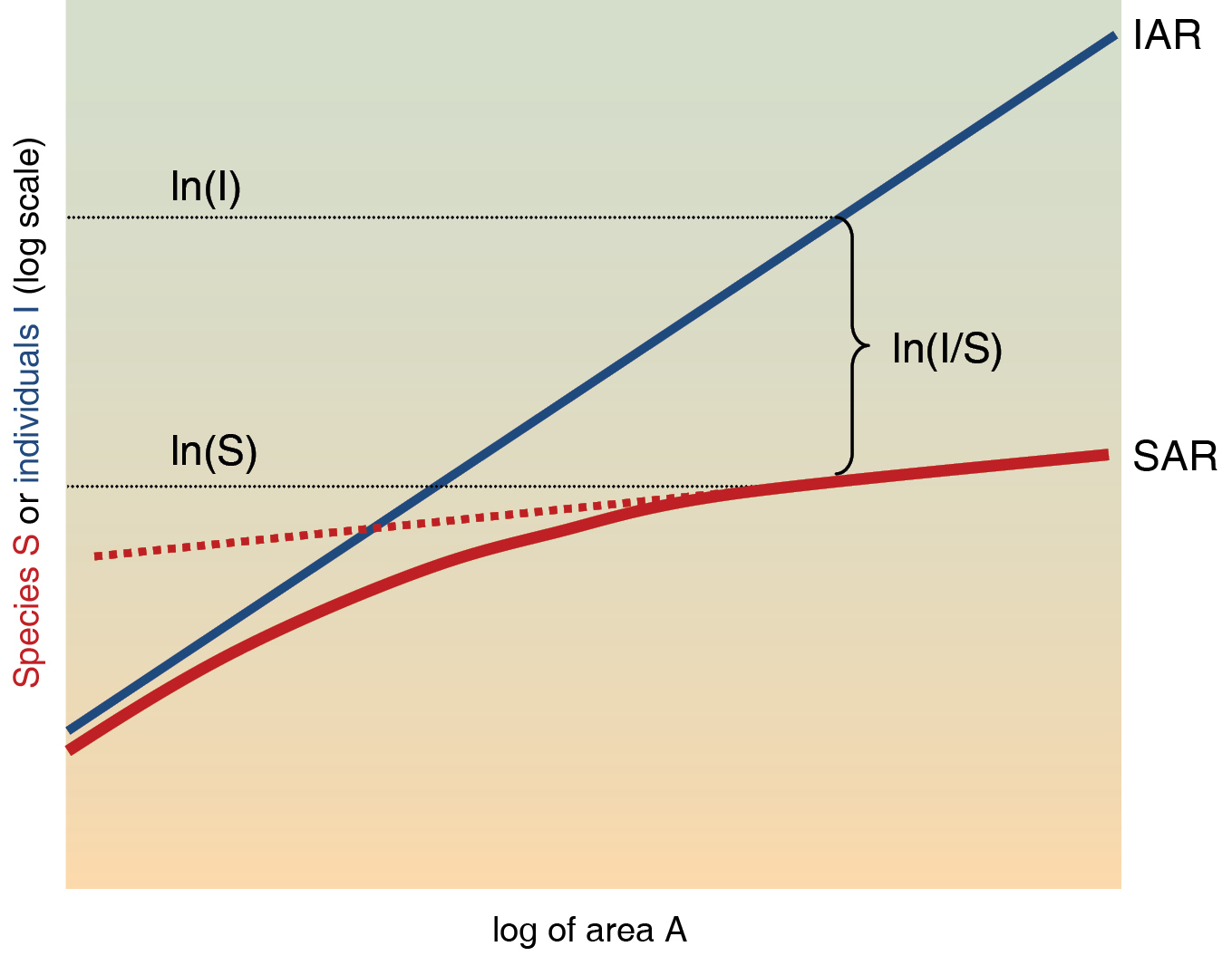
|
||
|
Species-area (SAR) and individuals-area (IAR) relationships at fine spatial scales. The average number of individuals in an area (summed across all taxa) has to increase linearly with area, i.e., in logarithmic space it is a line with a slope equal to 1. The number of species must be always lower than the number of individuals, and the increase in the number of species with area is less rapid than that of individuals, i.e. its slope must be less than one (unless every species is represented by just one individual; in such case both the curves coincide). This implies, however, that the species-area relationship cannot be linear across all spatial scales, since it cannot cross the individuals-area relationship (dashed line). This explains why the SAR is steeper when the number of species is closer to the number of individuals, i.e. when mean number of individuals per species is low. Mean population size is reflected by the distance between the two curves (since lnI-lnS=ln(I/S)), and thus related to the slope of the SAR, and consequently also to various measures of beta-diversity (Sizling et al. 2011). |